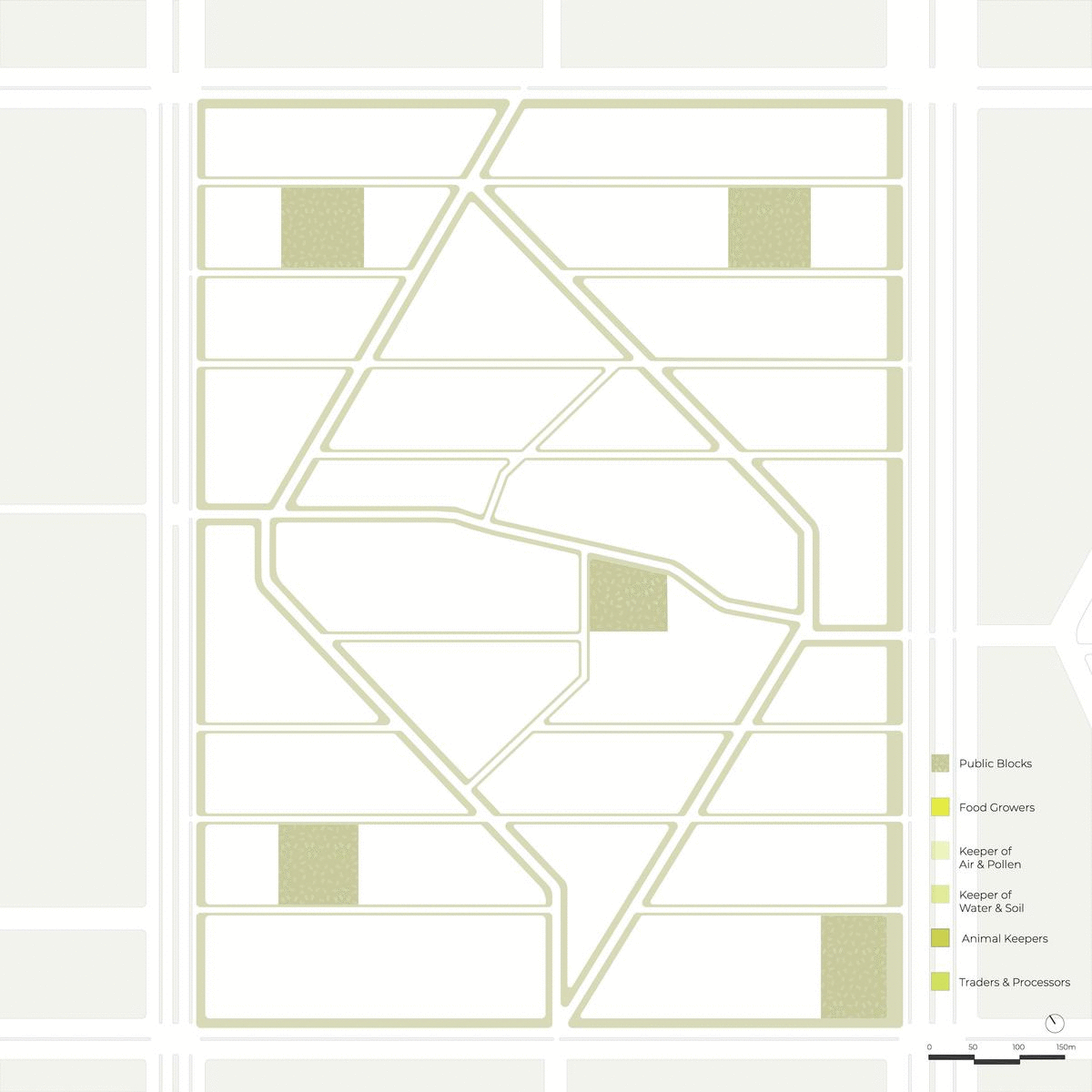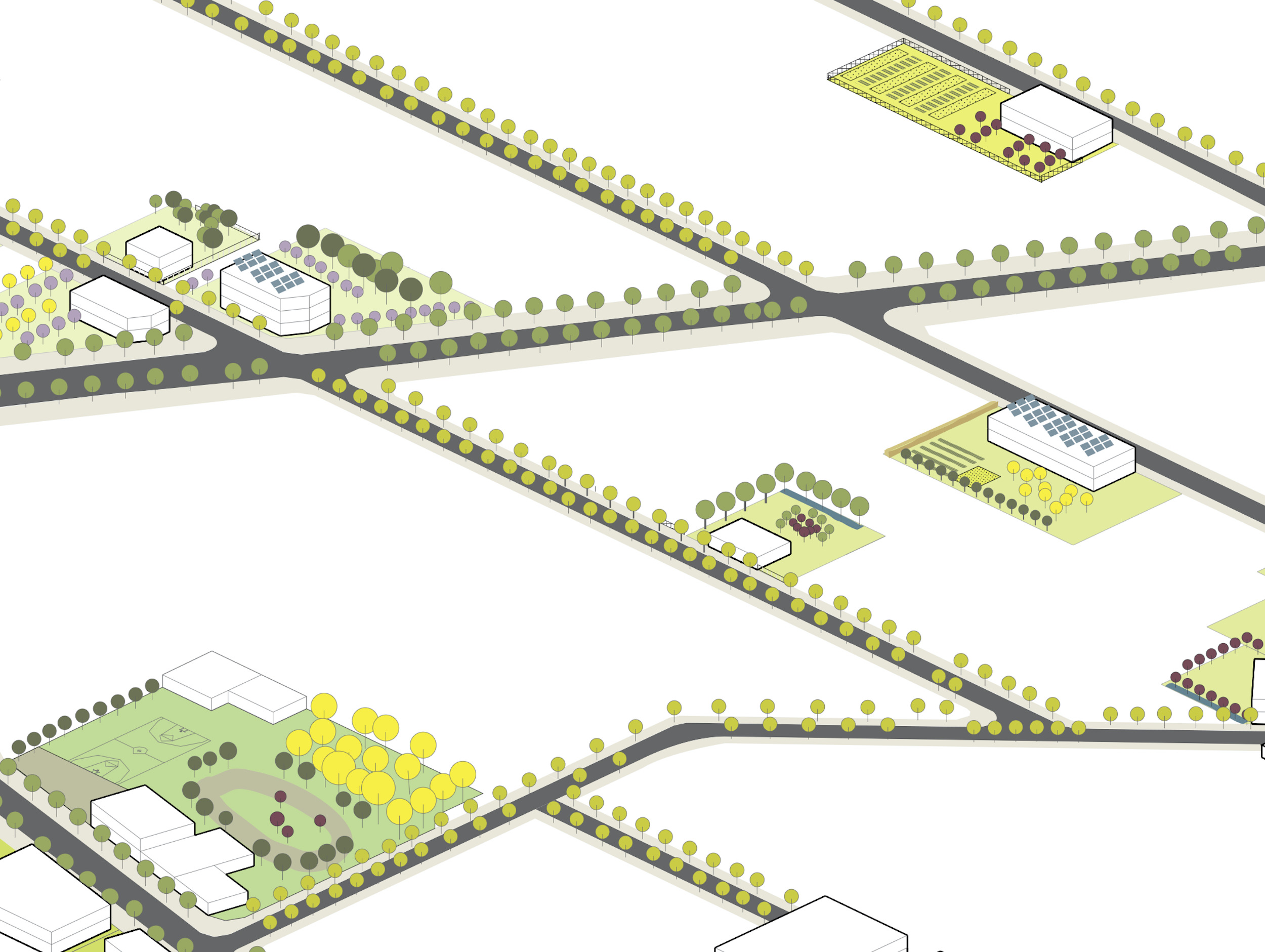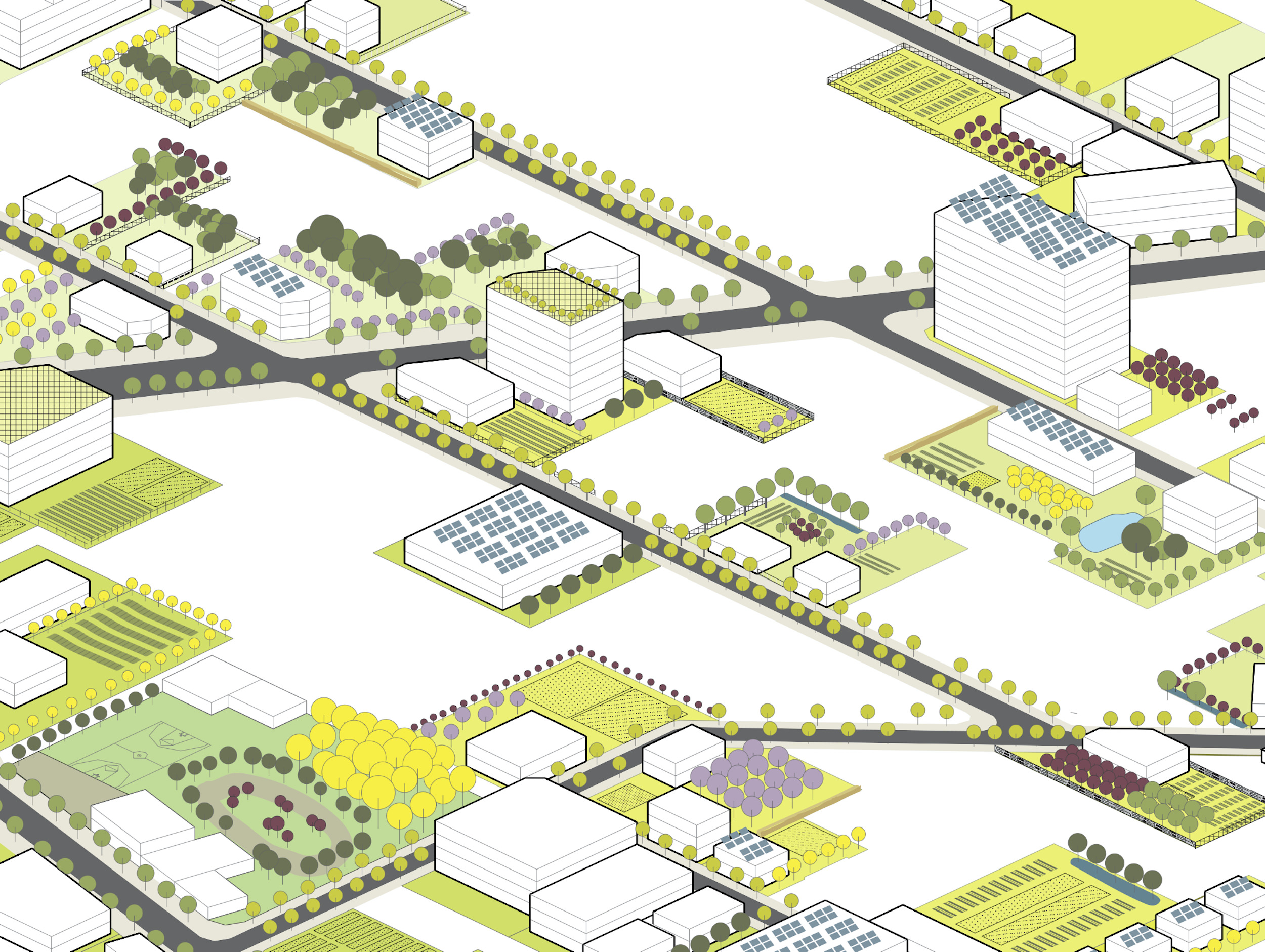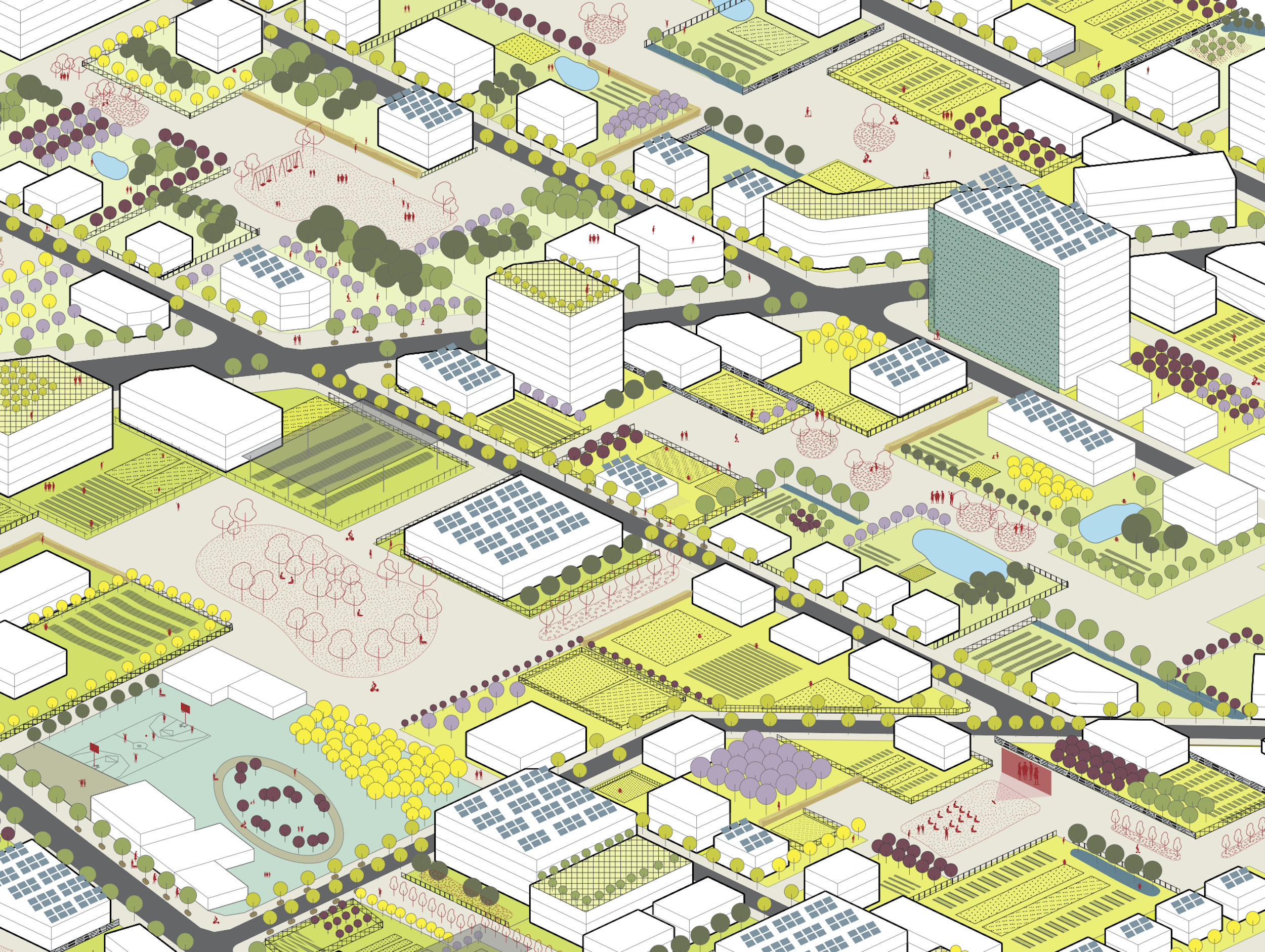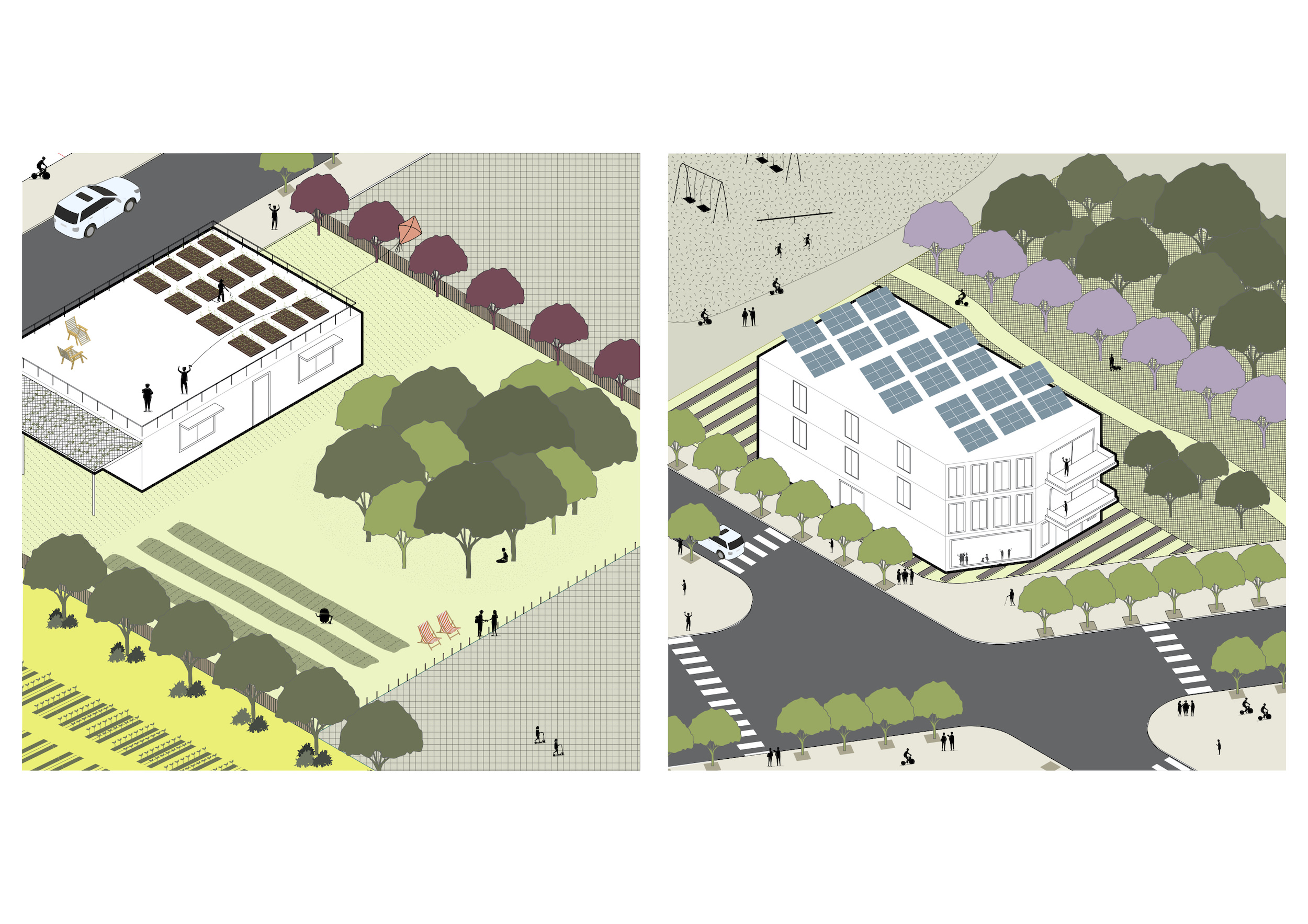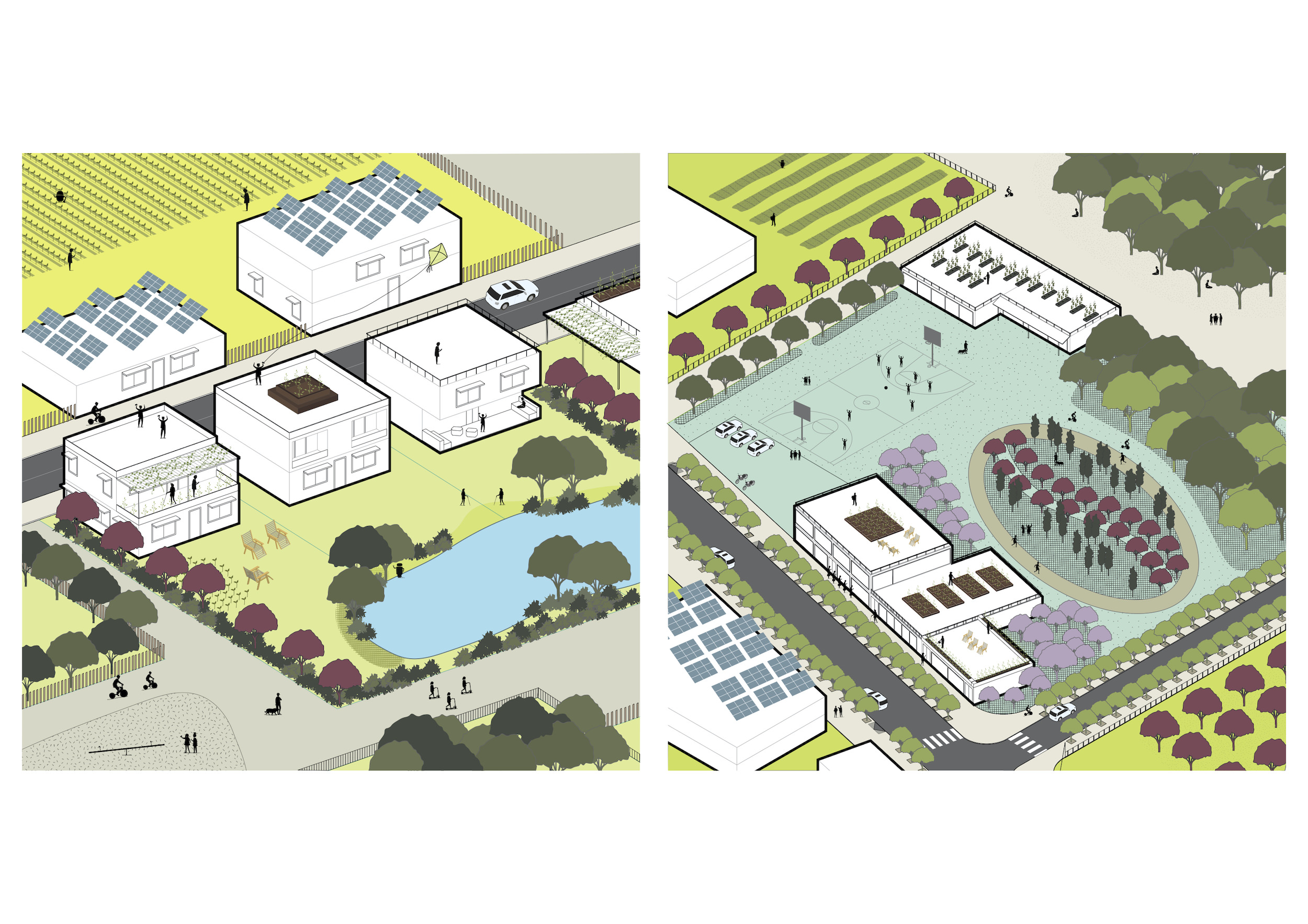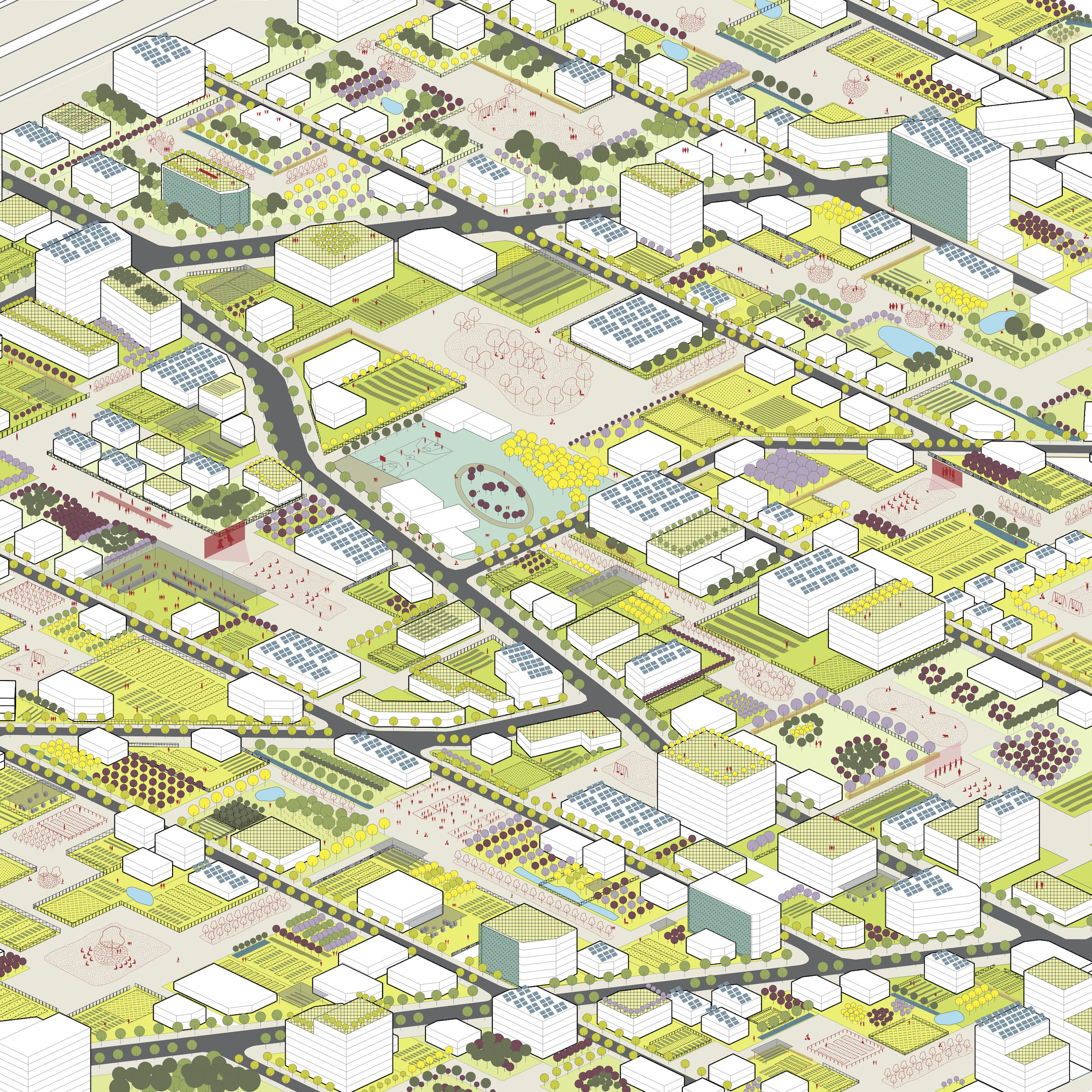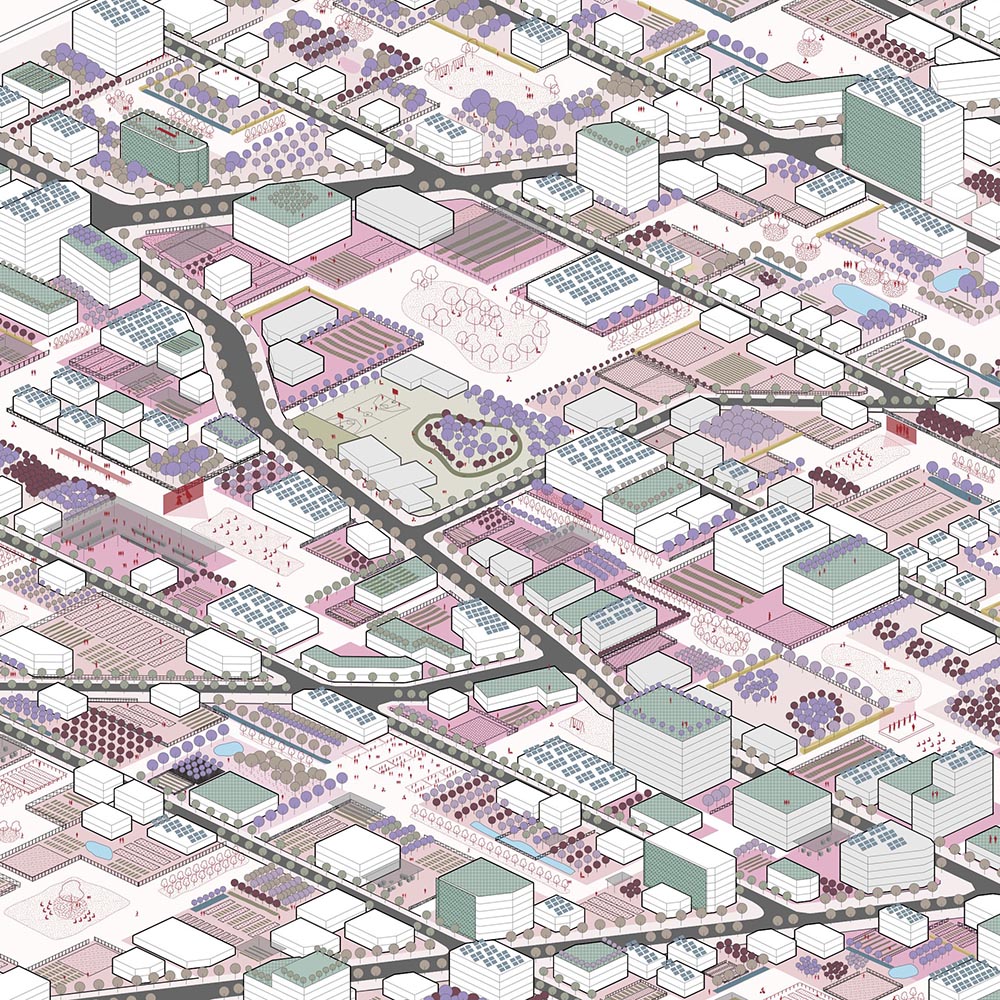The project is based on the premise of redefining existing planning strategies of Gandhinagar city , such that it addresses the growing climate crises by also actively involving its citizens. It envisions to build a place which promotes cohabitation of humans and the natural environment. Gandhinagar is already profoundly known as a green city, with its streets covered in trees and reserved forest areas. However, there are several pieces of land that are under-utilised and its green network is disparate and lacks holistic integration. It aims to introduce various productive landscapes at larger city level, at sector level and at private plot level through various planning regulations that also maintain a healthy socio-economical and diverse environment. The Project’s name is suggestive of the nature of development process, which is of building an environment of your choice following rules laid out by the city authorities.
City Level Strategy
At city scale the project aims to build an ecological corridor surrounding the city, with reserved forest area on the Eastern edge, industrial buffer towards the north, farmlands towards the south and diverse productive landscapes along the railway lines and within the vacant plots of the city.
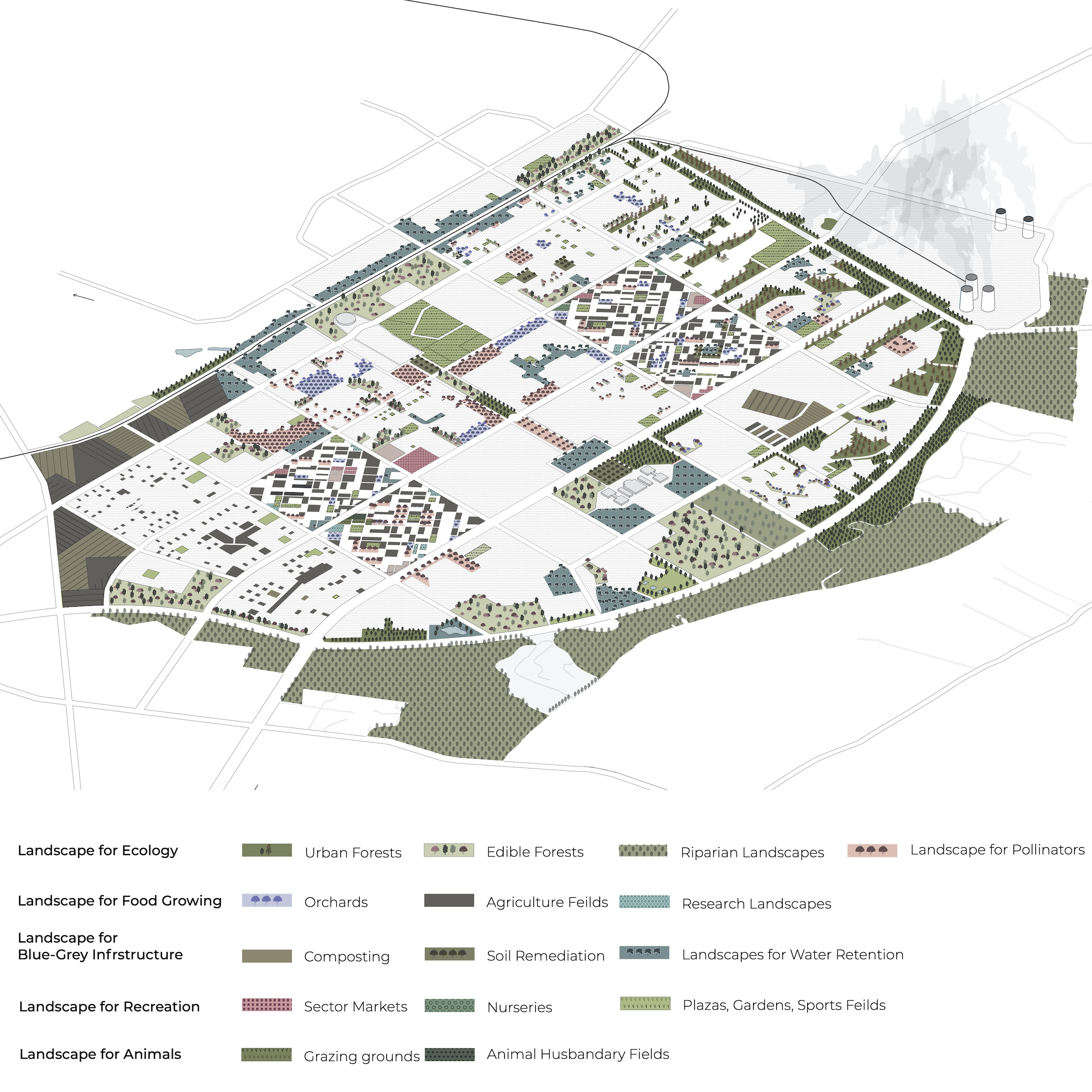
The landscapes include Urban forests and Landscapes for pollinators which aids for increasing biodiversity and cleaner air quality. Landscapes for Green-Blue-Grey infrastructure which includes soil building, water retention and composting and are closely integrated with urban infrastructures. It would allow also growing food and land dedicated to animal related activities, like grazing and dairy farms within the city.
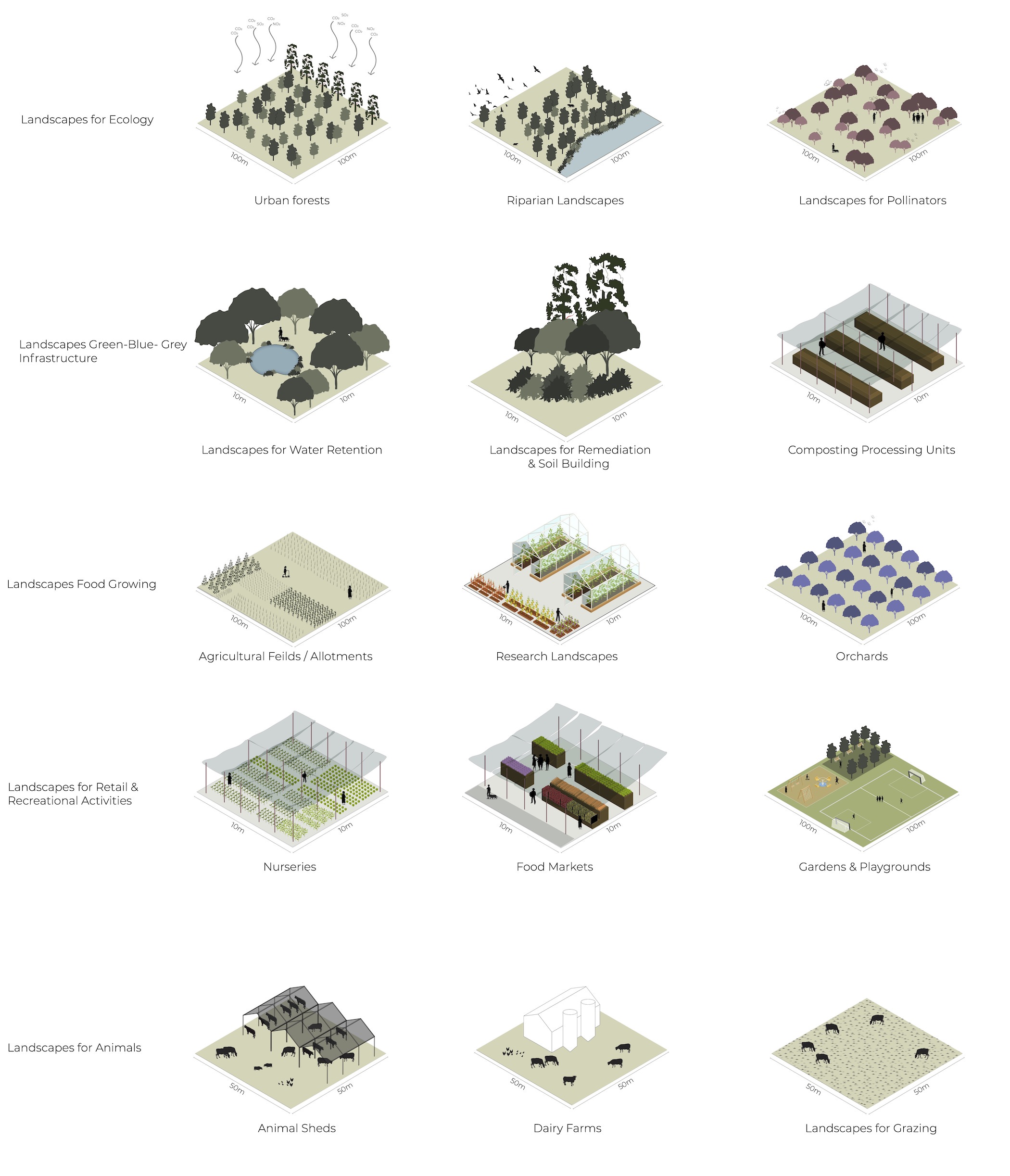
Sector Level Strategy
Sector 22 of Gandhinagar has been identified to test sector level strategies. The Sector is mostly developed on its edges and is largely vacant in the centre. For the purpose of the Project the sector would be assumed to be entirely vacant. A base framework is proposed that ensures accessibility, walkability and defined public spaces for sports facilities, parks & gardens and other such public activities. The framework comprises of the street layout, urban blocks and plots reserved for public use. These are the attributes of the sector defined and developed by the city authorities and hence would remain constant.
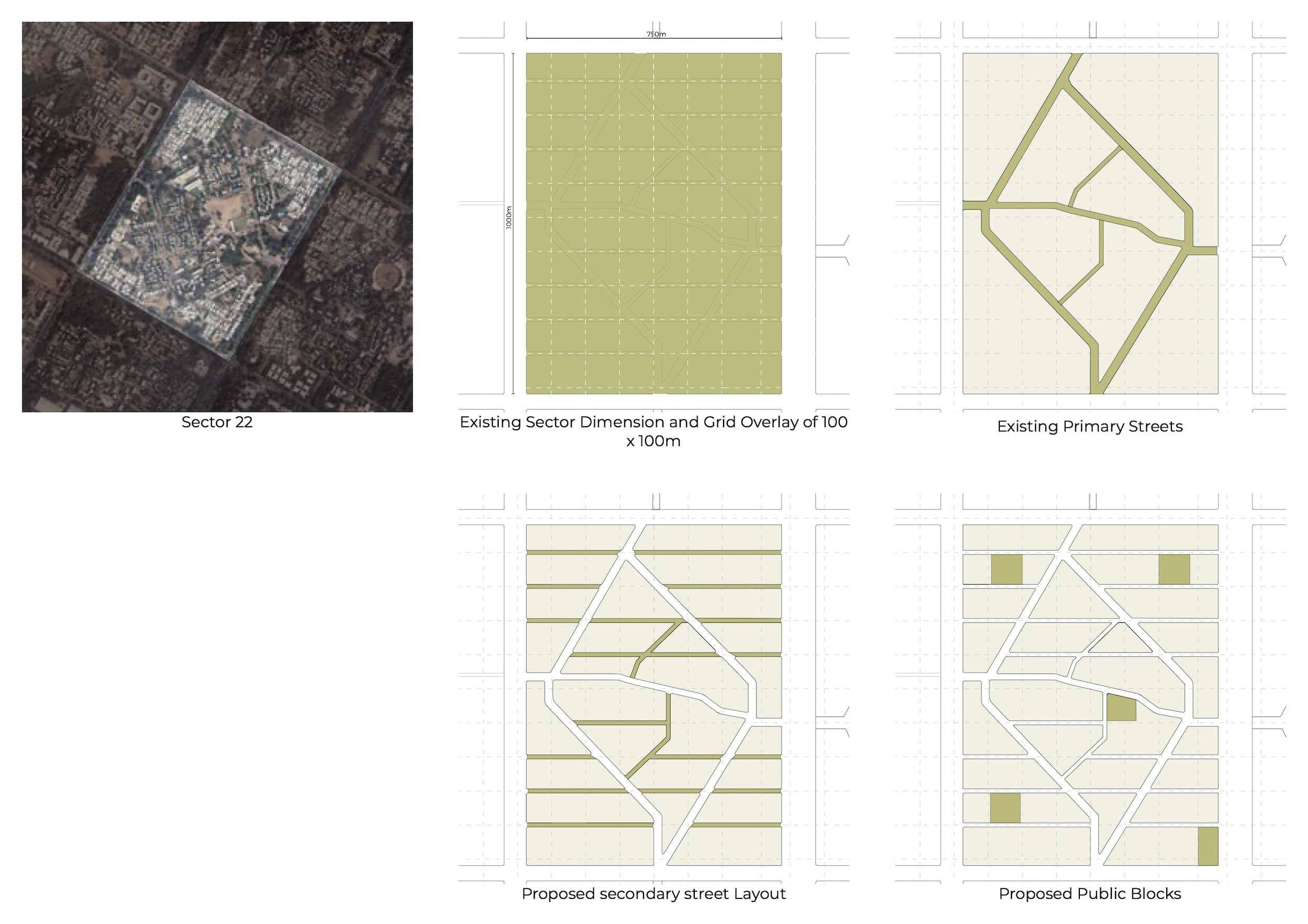
Residents as Keepers
In order to reside in this sector the residents would have to take up the role of a keeper. Keepers are people who are responsible of building and maintaining (keeping) productive landscapes of their choice within their private plots. The role of Keepers is of dedicating a majority of their plot area for, food growing if you opt to become a food grower, you may build a forest on your land if you are a keeper of air and pollen or you can dedicate your entire land for your cows and sheep if you want to become an animal keeper.
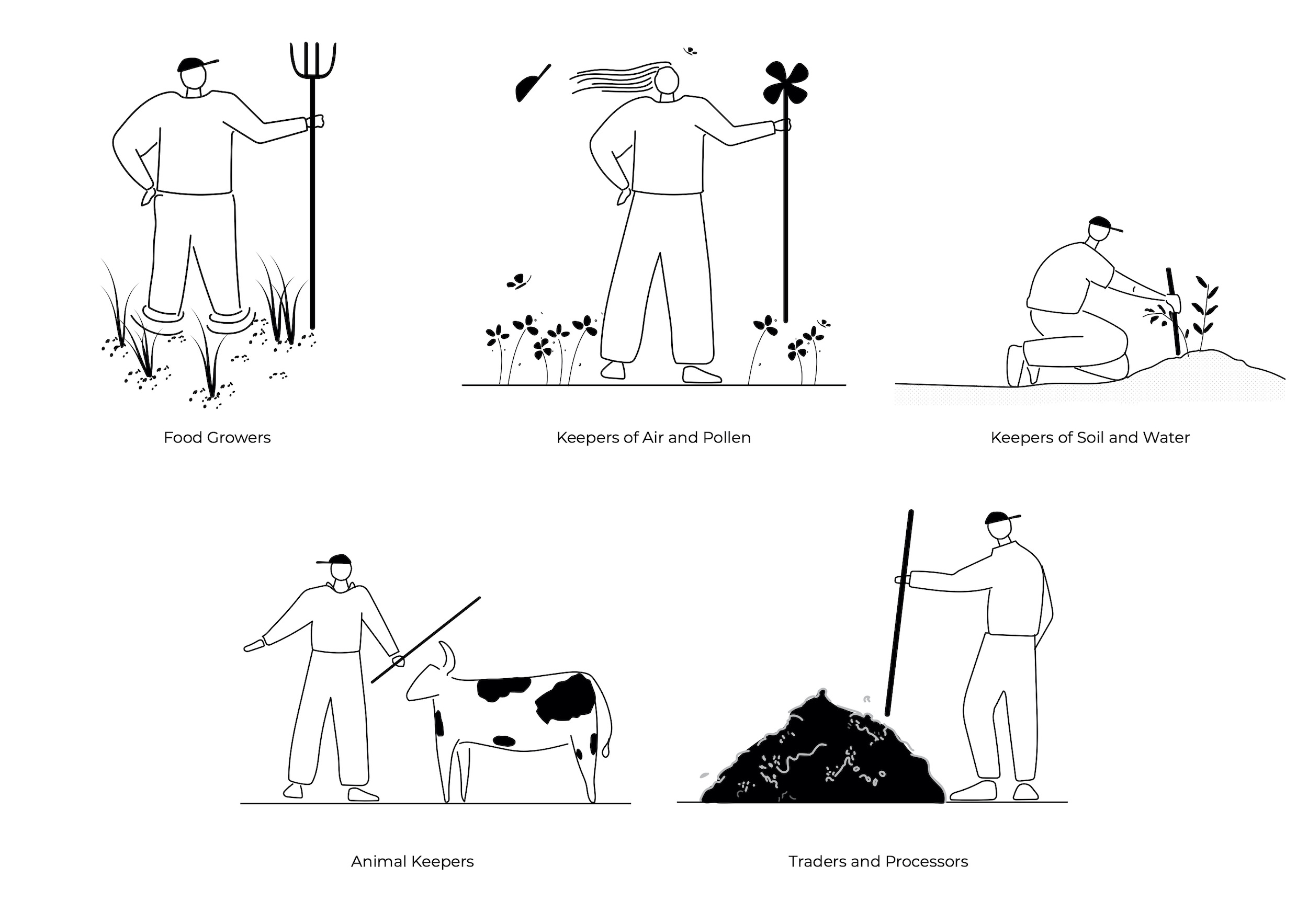
Placement of Keepers
Considering the unique purposes of all these keepers, zones have been identified in the sector on which people would build that would allow them to function most optimally. In addition to this, in order to maintain diversity of landscapes in the sector, keepers have an upper limit to reside in the sector. For instance, Food growers (collectively) can occupy upto 40% of land area of the sector whilst Animal keepers can occupy upto 5% of the sector. For keepers who wish to live and work in the same plot may do so on streets which are 18m or bigger.
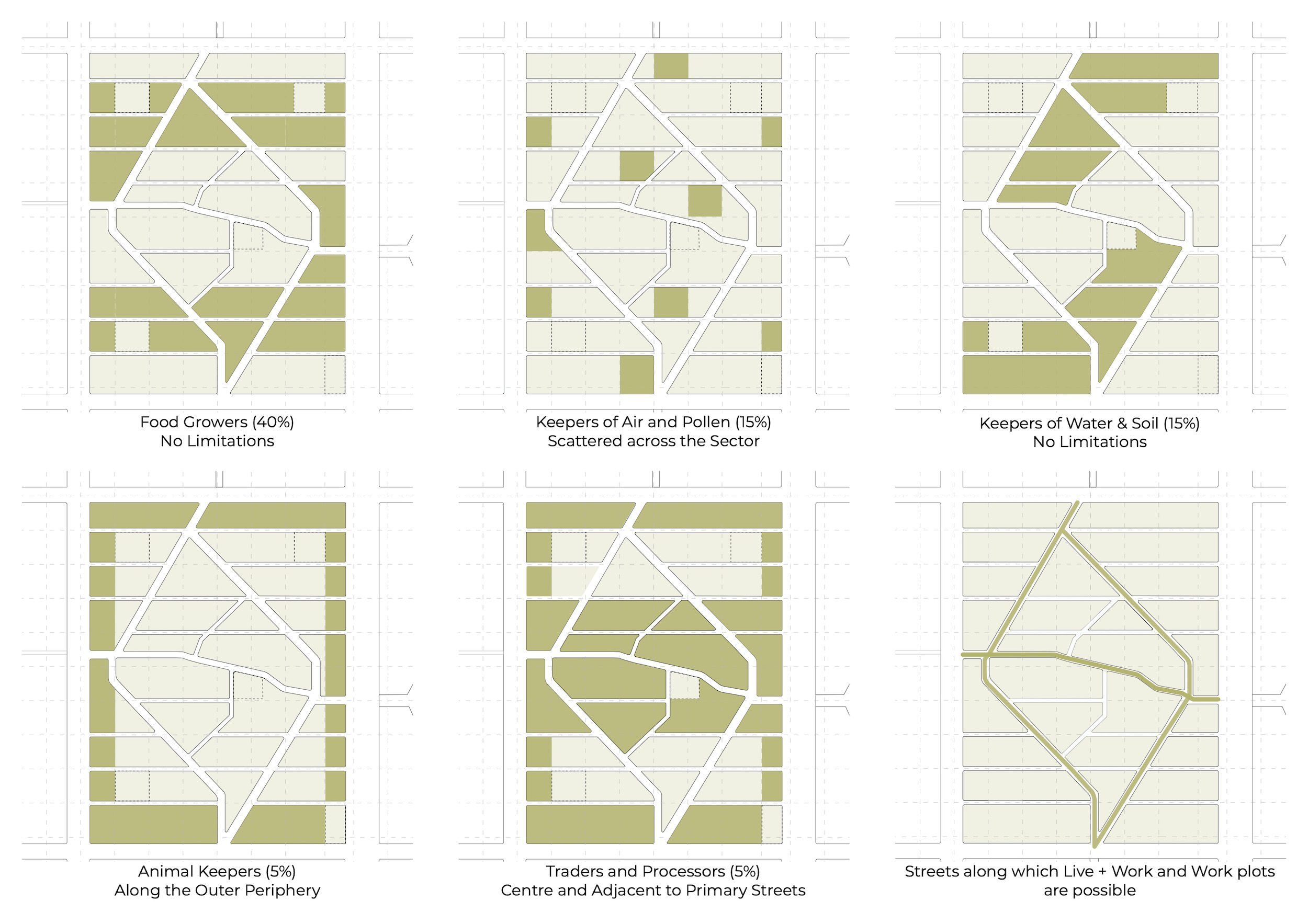
Plot Level Strategy
The plot level strategy not only overlooks how the plots are located and placed in a block, but also how and what keepers are building within their plots. This ensures that the Keepers are dedicating enough land area for development of productive landscapes and also organising in such a manner that it doesn’t hinder socio-economic activities and liveliness of the neighbourhood.
The strategy identifies landscapes that the keepers could incorporate in their plots. These landscapes are necessary landscapes and optional landscapes i.e. elements which are necessary to fulfil their role as keepers and elements they could choose to add on. This allows residents to plan and organise their land, while also incorporating various elements and landscapes typologies in their private plots.
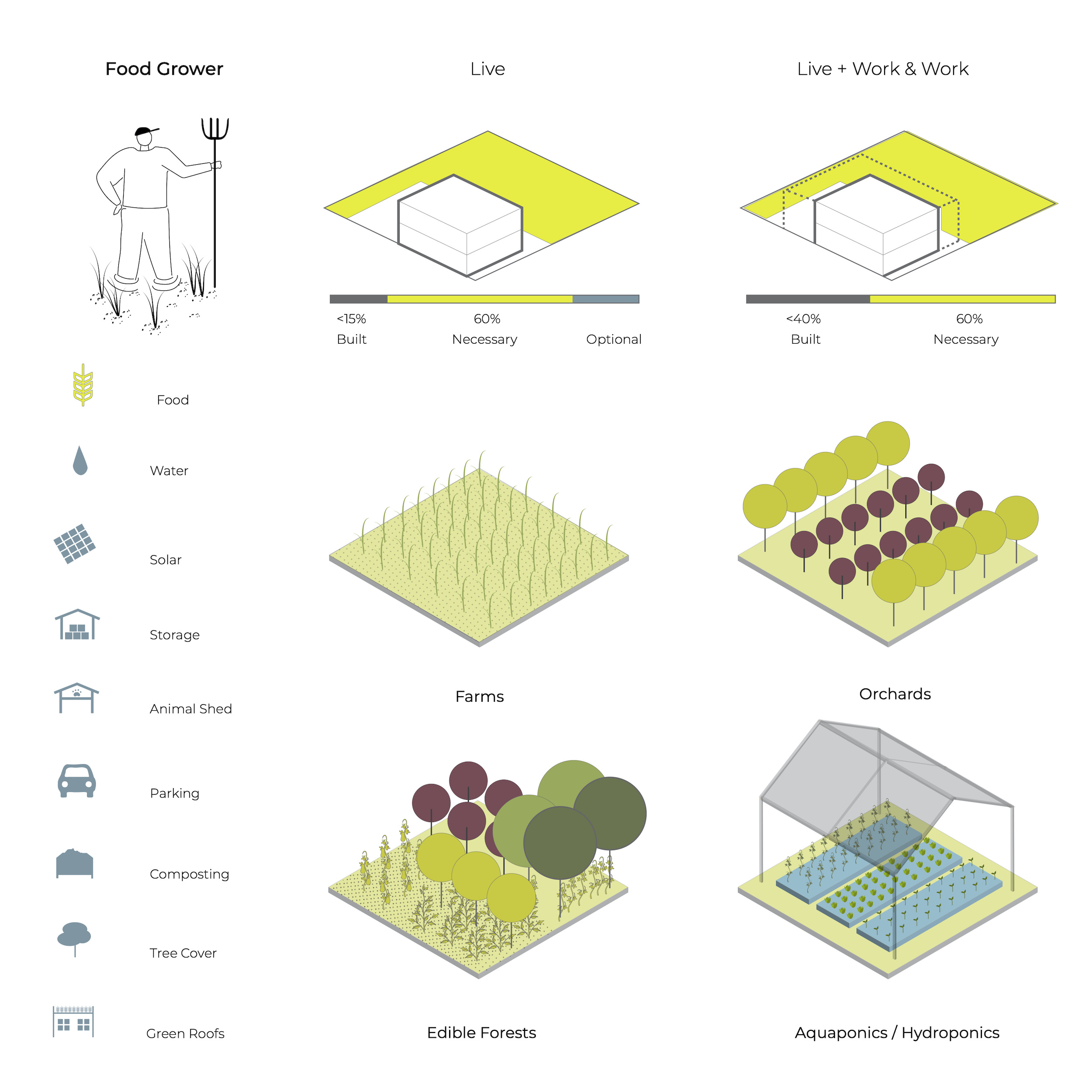

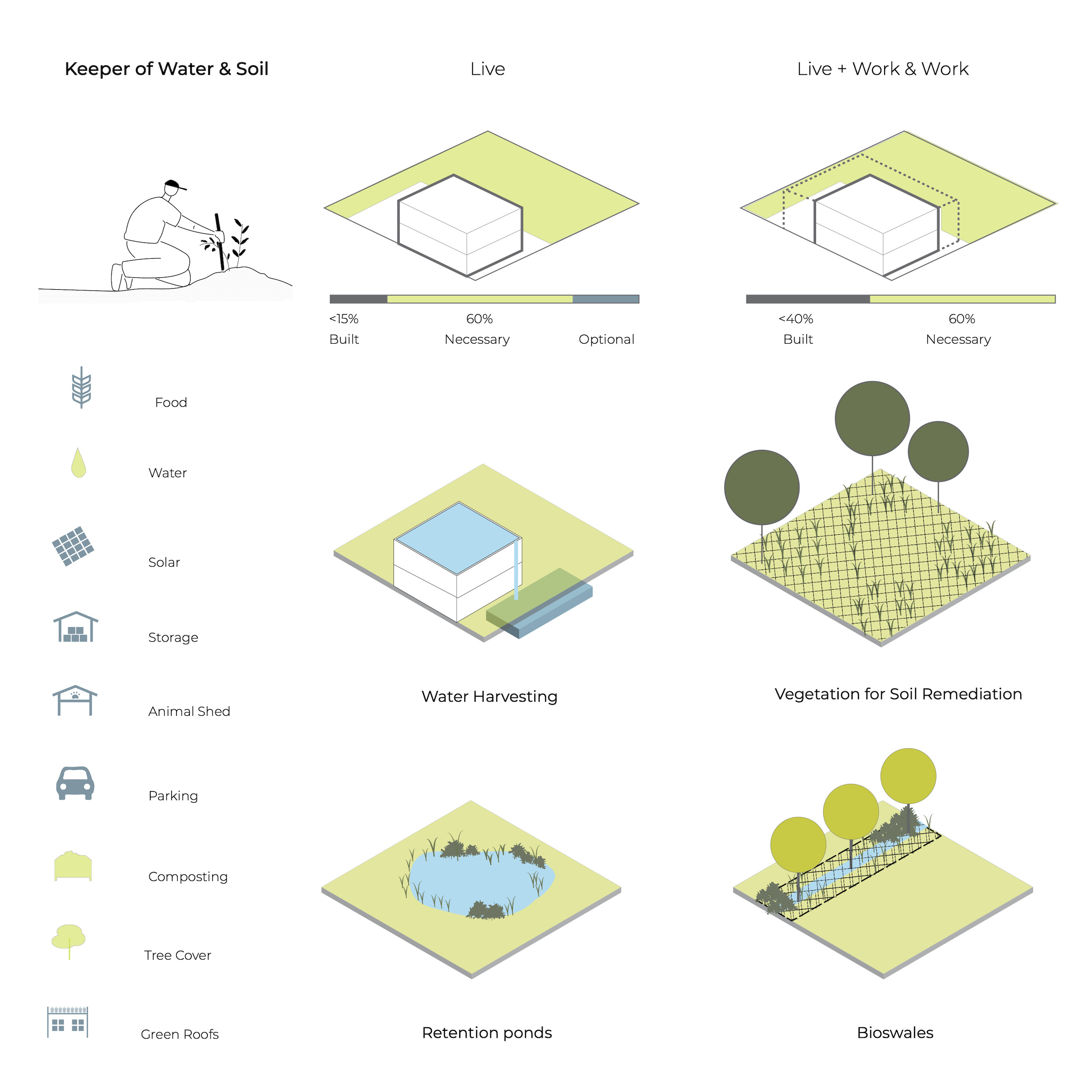
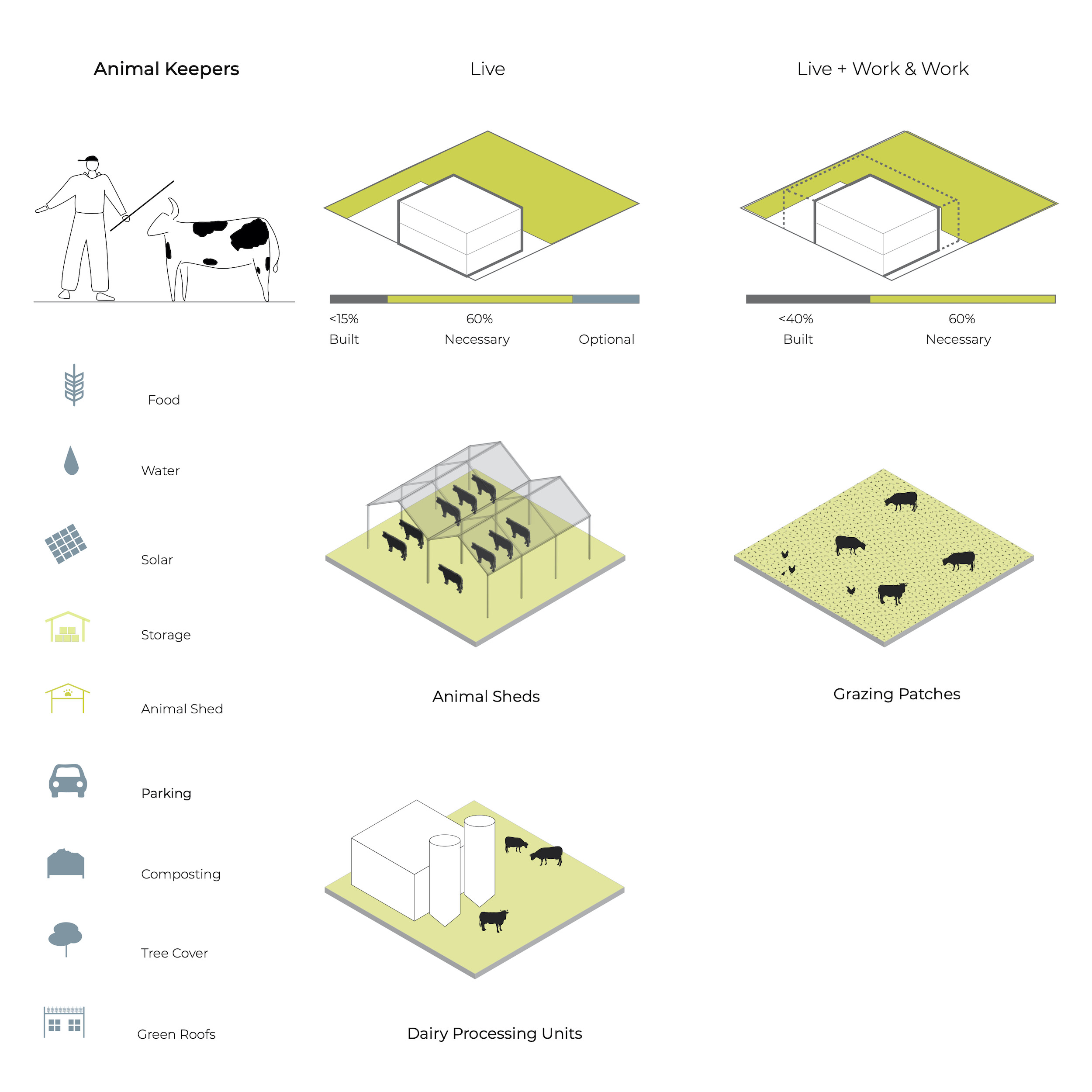
Traders and processors are essentially plots with commercial or retail usage. Hence, their built requirements exceed from the rest of the keepers. As a way of compensating for the lost open land, some of the optional landscapes elements become necessary for the traders.
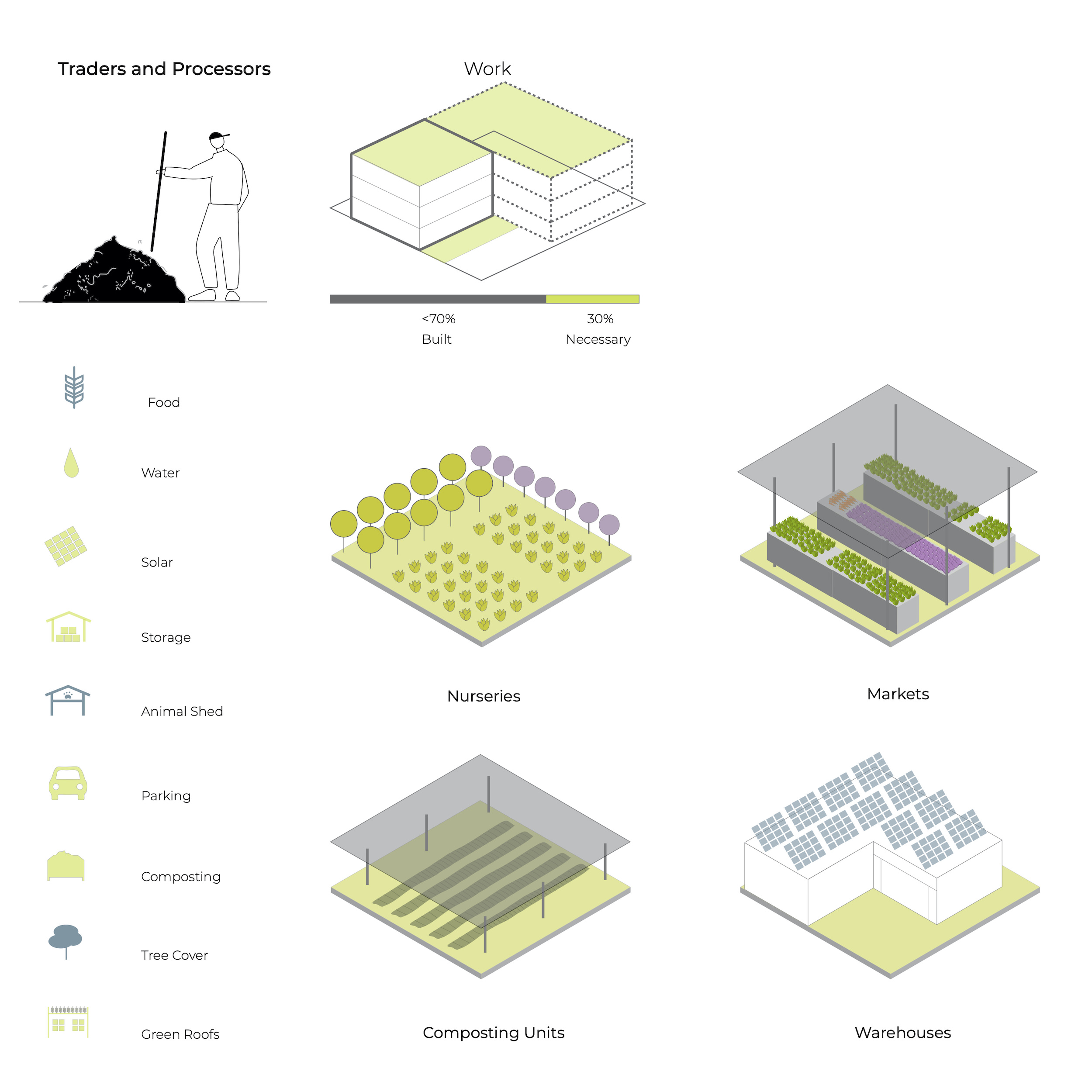
Placement of Plots
The base framework does not include any pre-defined plots for the residents to purchase. The residents get to decide what size of plot they want to purchase according to their capabilities, keeping in mind the fulfilment of role of keeper they have chosen. When people begin to decide on their plot locations and sizes, there are a few organising rules they need to follow which would help build more liveable and walkable neighbourhoods.
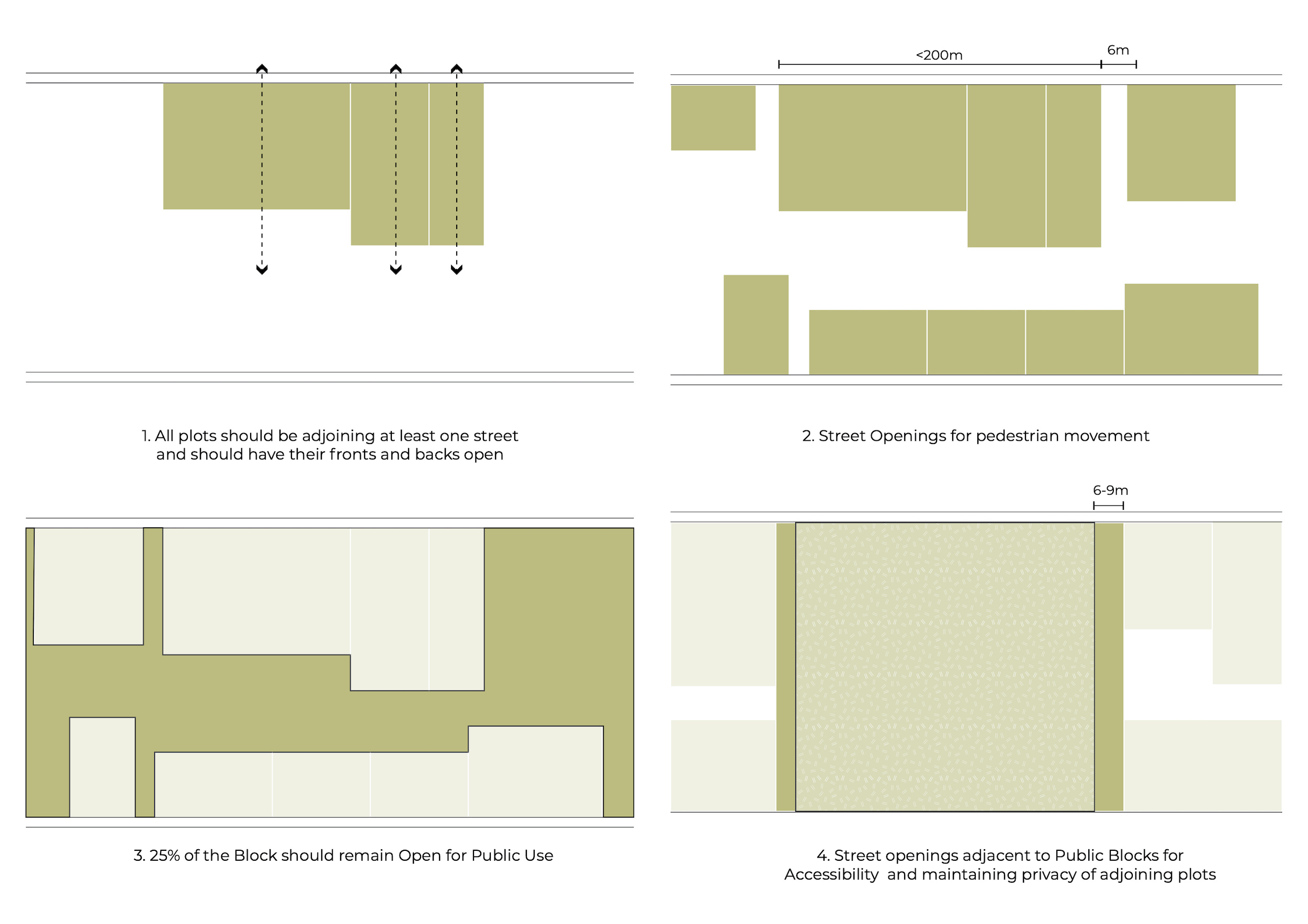
There are rules to build within the plot that ensures a built environment which promotes liveliness and interaction between the residents.
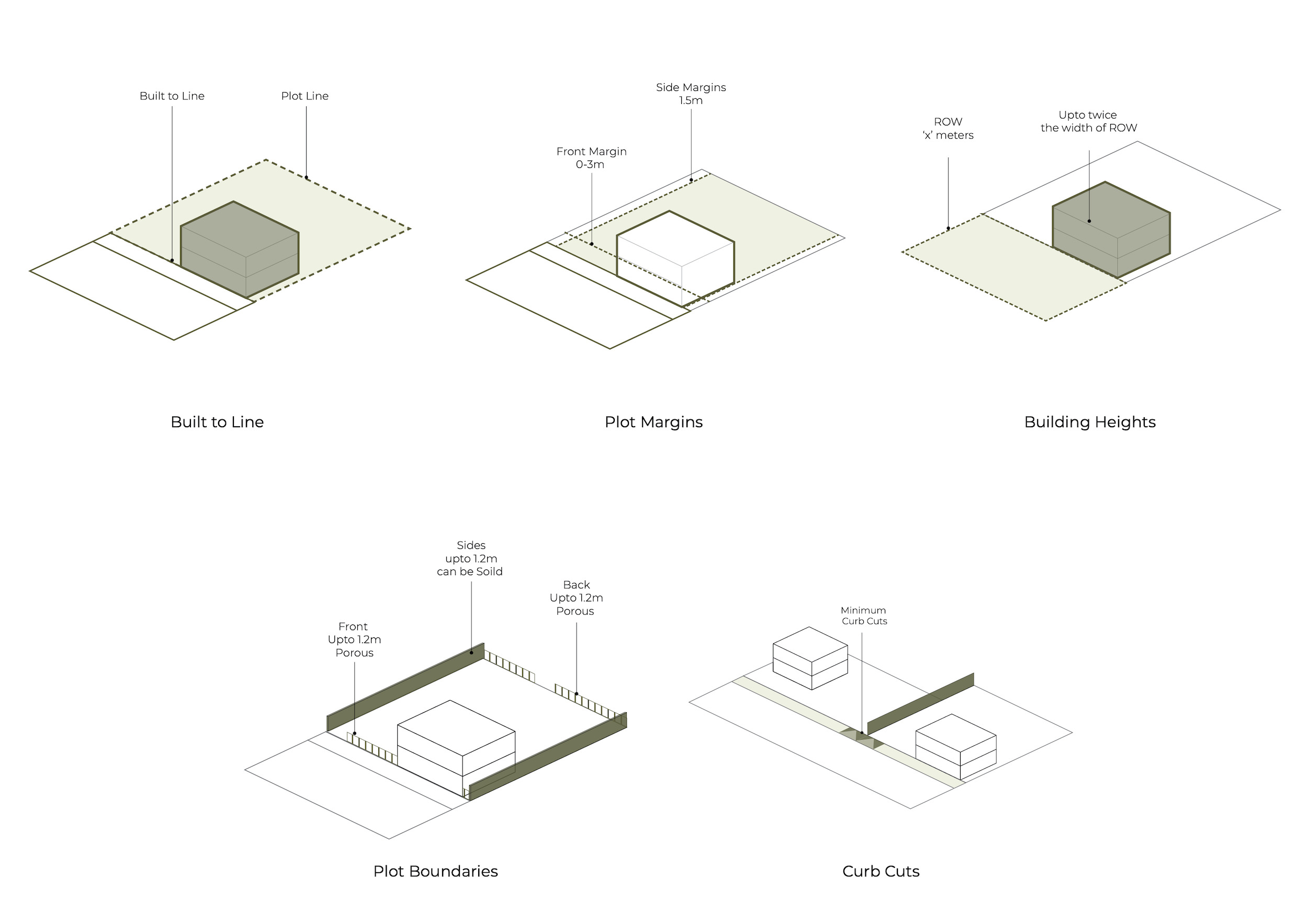
The plan shows a small part of the 12m street, with availability of on street parking, plot entrances, boundaries and access to common backyards, nature of landscapes and varieties amongst the same keepers.
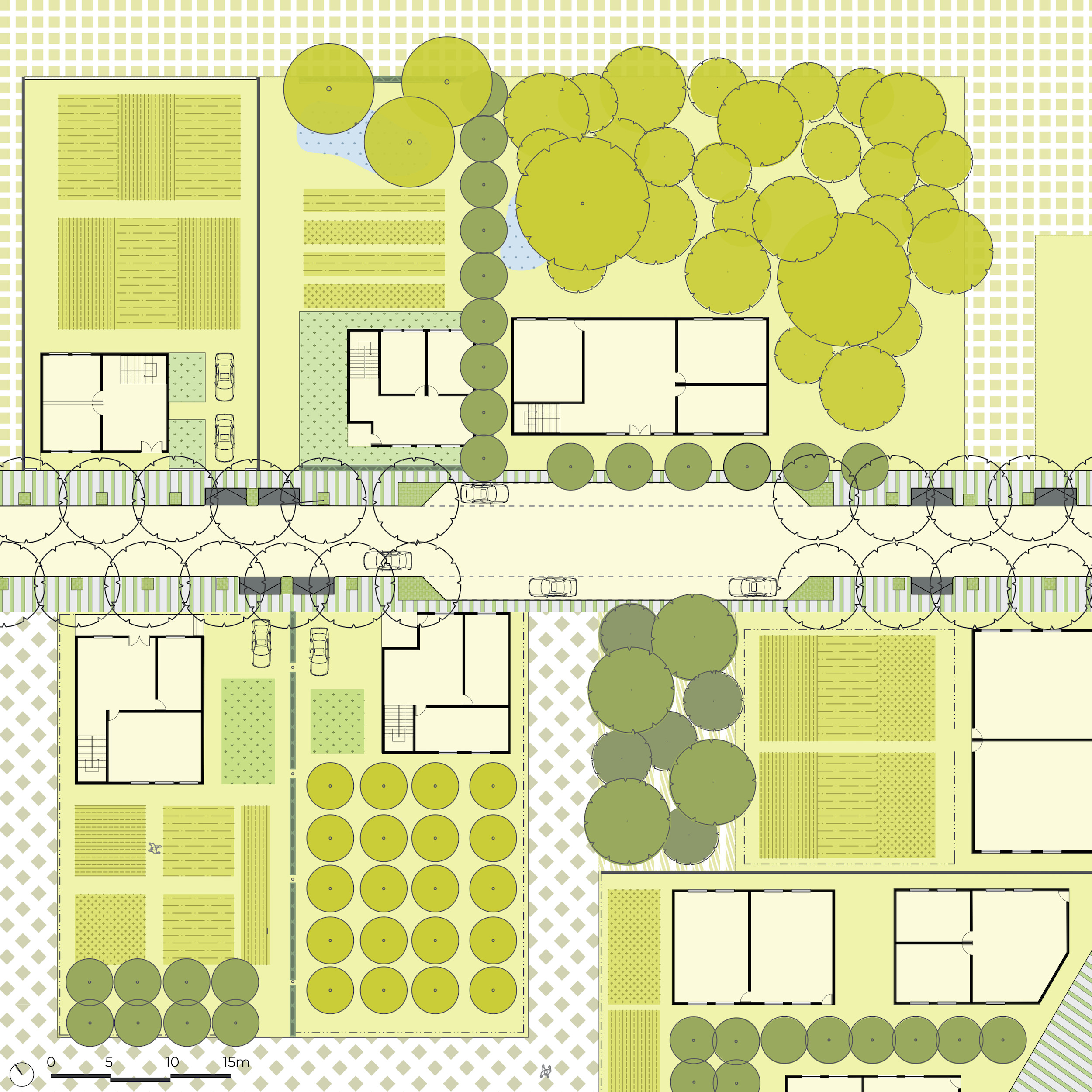
Sector Evolution and Visualisation
The spaces leftover in the centre of the urban blocks, that emerge only over a period of time, become common backyard spaces for the neighbourhood. These spaces can take whatever shape the neighbourhood decides to! It can be turned into a forest, a playground, dog park, open market spaces, space for celebrations, open air theatres and so much more.
Gradually over a period of 10 years the sector develops, with a variety of landscapes with ecological, economical and social values making it a resilient and vibrant place to reside in.
